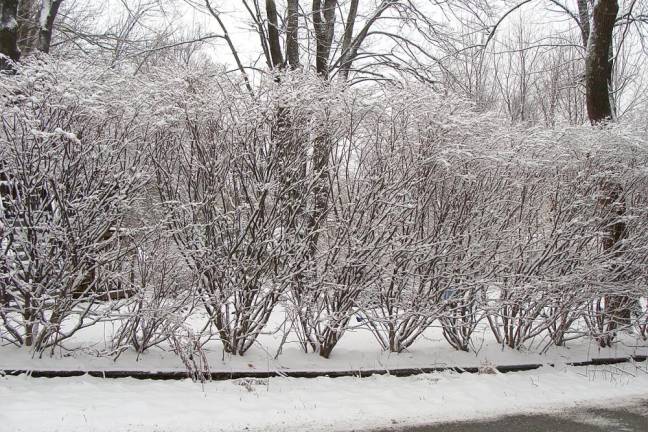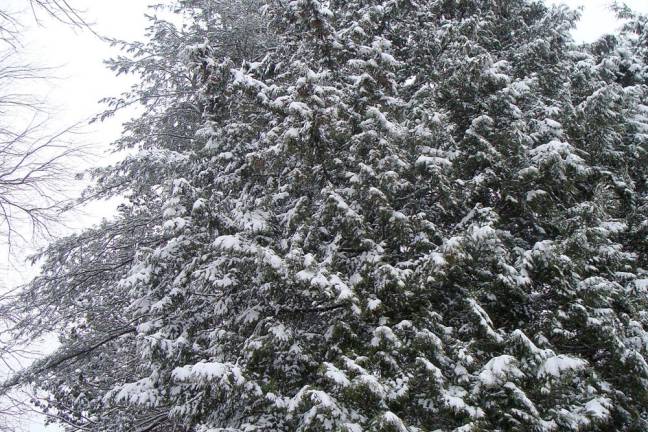Snow in the forecast
Vernon. Winter season officially begins on Dec. 21 and one winter storm is already under the area's belt with the Dec. 1 storm that knocked down trees and power.


As the snowstorm of Dec. 1, fades to a memory, as we ponder the shoveling, slick roads and frigid days waiting for the power to return, do we really understand the science, lore and excitement of snow.
It’s mind boggling to scale down 12 inches plus of the white stuff to symmetrical six-sided individual snowflakes. Snowflakes are precipitation in the form of ice crystals that originate in clouds when minimum moisture is available and temperatures hover at 32 degrees F and 0 degrees C. No two snowflake patterns are ever the same.
Recalling our elementary school science class, it can be too warm to snow but never too cold to snow, just as long as there is a source of moisture.
According to the National Snow and Ice Data Center, snow and cold has an effect on plant life. Deciduous trees drop their leaves and go dormant. Evergreens are just that, ever green but their leaves or needles develop a waxy coating. Animals must also adapt to the cold and snow. Mammals grow thicker coats, grazing animals must forage through the snow for food. Some animals build up fat reserves and hibernate until spring while others, mostly birds, migrate to warmer climates.
Snow and cold tend to divide the human population. Some retreat to the warmth of their homes, enjoying cozy fireplaces and hot chocolate. Other stoic individuals adore snow and winter lavishing in skiing down mountains and cross country, snowmobiling and even snowshoeing with tear-drop or bearpaw shaped snowshoes.
Adventurous? Supposedly!
As we anticipate the beginning of winter, which actually doesn’t begin until the winter solstice on Dec. 21, we realize we already have two storms under our belts.
The winter of 2019-20 is on its official way.